|
|
Location: Green Bay, WI | Now that musky season is quickly approaching, a friend and I were having a discussion about what to do when a musky hits a trolled lure. I have always simply simply shifted the boat into neutral (within a second or two...as quickly as I can react), but I have heard many people proclaim that you should gun the engine to start an acceleration. So I've been thinking about this, and believe that it really makes no difference. I have several points in support of my argument (some of them using complicated mathematics--yes, call me a geek), but don't want to elaborate on them until I hear some other opinions. But in fairness I will say up front that I do not feel that trying to accelerate makes any difference when the strike comes.
The other thing I'll add is that I am not sure it's real *safe* to firewall the throttle at the first sign of a strike. Anglers, by their very nature, are pretty "wired" for the sound of the reel going off, and are heading for the rod at the first sign (sound) of the strike. And as the boat obviously lurches forward when the throttle is gunned, common sense should dictate that it might not be all that safe to be gunning the engine suddenly when someone is trying to move quickly in the boat to get to a rod. So if nothing else, this can be a thread about trolling/boating safety--and it's not a bad idea at all to spend a bit of time discussing boat safety just prior to the start of the season
Well, that's it...let's hear it!
TB | |
| | |
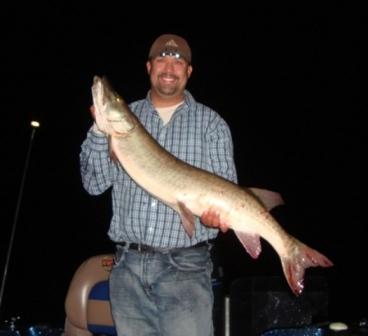
Posts: 742
Location: Grand Rapids MN | When we do fall structure trolling we just keep the boat in gear until a person can get the rod in hand and starts fighting the fish. We don't gun it nor slow down. The boat speed helps keep tension in the line. In our case I wouldn't gun it for the fact we do get hung up from time to time. Hitting the throttle could result in broken line, rod, or rod holder in some cases when snag on bottom. Even with a drag set fairly light you can still feel the difference between a fish and bottom when trying the pick the rod out of the holder. The bottom of course just doesn't give.
This is just my experiences... Hope it helps. | |
| | |
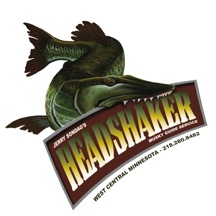
Posts: 692
Location: Pelican Rapids, MN | The only time I would gun the throttle is if I were slow trolling at a snails pace with rods in the holders, set with a light drag. Other than that, someone has been watching too many offshore fishing shows where they use a 50' Hatteras to set the hook 
I would however advise to keep the boat in gear until the fight is well on and the other lines are cleared. It keeps pressure on the fish and the other lures in the spread, Keeping them from tangling. When you go right to neutral at the strike there's a chance that the fish will gain some slack and shake off. Not to mention, those neutral hanging extra lines are sure to get in the way. | |
| | |
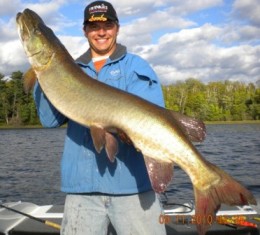
Posts: 1169
Location: New Hope MN | Targa01 pretty much has it. Never ever "gun it" If you are thinking you are setting the hook you are a fool. Add your reaction time plus the engine lag and you've lost 2 seconds at a minimum.
Keep the engine in gear until you get the rod in your hands. If you have a lead ball, shift in and out of gear, but again keep the engine in gear until you get it in your hands. | |
| | |
Posts: 227
Location: New Brighton, MN | I've never heard of gunnning the engine to set the hook. It actually seems kinda silly to me. Why risk a broken line/rod? If your drag is tight, that seems like a heck of a lot of stress to put on your equipment, not to mention the poor fish. Just grab the rod, set the hook, throw it in neutral, and bring in the fish. I don't think hook sets are quite as neccesary when trolling, I give the hookset about 50% the normal pressure since you're already going 3-5 mph.. | |
| | |
Location: Green Bay, WI | Great points guys...
I troll with monofilament line, and with 25% line stretch (some say more), the shock of the strike is being absorbed by the give in the line anyway. So any additional acceleration is moot, as the line simply stretches more. I do realize however, that many guys are NOT trolling with mono, instead using the superlines which don't really stretch much at all.
I'll save the math for a bit later (but it is interesting), but will also add that the acceleration of the boat is too slow to really affect total force on the lure, even assuming an idealized situation where there is absolutely NO line stretch. Someone mentioned this already, and I agree 100%. But also, when you gun the engine, the boat doesn't accelerate in a flat attitude--the bow comes up initially, and the stern goes down. In other words, the boat rotates. So much of the additional force imparted on the boat by the extra engine thrust is simply wasted--it's spent rotating the boat. Given several seconds, sure...the boat would accelerate. But you aren't going to floor it and count to ten to set the hook! The poor bugger trying to grab the rod would be holding on to the back seat for dear life, trying to avoid falling out over the transom. In only a couple seasons on Green Bay, I can tell you I have already seen some scary stuff from other boats.
You guys have made some good points...keep them coming.
TB | |
| | |

Posts: 74
Location: thunder bay | I never gun it, I keep it in gear to keep the line's tight. Only when I'm slow trolling I set the hook anything 3 mph and under, anything faster i don't set the hook because I feel when your going that fast the boat does the hook set for you and when you put that exta hook set in, your just making the hook holes bigger which make's it easyer for the fish to throw the hook. | |
| | |

Posts: 3242
Location: Racine, Wi | Like the others, I just keep the boat in gear at the same speed in which it was already moving until all of the other lines are cleared or out of the way. Once the fight has been under way for a while and the fish is some what "under control", I'll put the boat in neutral so I don't worry about the fish getting into the prop.
The one thing that has happened in the past with putting the boat in neutral right away, especially with fish that hit board rods, is we tend to get slack in the rod. So if a fish hits a board rod, I'll keep the boat moving at least until I get the board off (I usually don't set mine to release when fighting the fish). Once the board is off and I have a direct line to the fish, I can put the boat in neutral to fight the fish (assuming all other lines are cleared).
Good topic Tom! | |
| | |
| i've not done a ton of trolling, so i'm interested in hearing opinions and experiences of the experts.
up until now my theory has been a fish hitting a trolled lure has already "set" the hook before the rod is grabbed and i've just wanted to keep the tension on the line.
if moving downwind/downcurrent or if it's calm, i pop it into neutral because the boat will continue moving forward on it's own. when going into the wind or upcurrent, i throttle it down but keep it in gear so that the boat doesn't get stopped and pushed back into the lines.
| |
| | |

Posts: 742
Location: Grand Rapids MN | Geek to geek you're thinking right about the mechanics of what's happening. Others have made great points that I failed to think of and mention. My limited trolling experiences have been up on LOTW/NWA so it will differ from GB some. Once a fish is hooked we point the boat towards open water since we can be as close as 15' from rock walls and there are a number of shallow rocks and points. Once pointed to open water the other person clears the lines while still in gear (we do slow it down some once we get cleared of rocks). As others mentioned it helps in keeping lines from tangling. We actually pump the rod as we reel in the other lines and have had fish follow in and I've even caught a fishing doing that. When clearing the last line the boats thrown in neutral. It can be very windy at times so we leave the motor running in case we need to move the boat around more. It sounds like a lot but it can be done quickly once everyone knows their jobs and what to do. Go from piece and quiet to a fire drill..
I can't say enough about having good boat partners in trolling situations. Probably even more so than casting. | |
| | |

Posts: 3242
Location: Racine, Wi | I forgot to mention, I don't "gun it" either to set the hook. I run both mono and braid, and haven't had hooking issues by just keeping at the speed I'm running. Keeping everything as is helps from creating slack in the line or breaking a fish off.
Another reason for keeping the boat in gear as you clear other lines out of the way is, depending on wind and other currents, your boat won't always keep drifting forward. You may start drifting sideways and then you end up with lines all over the place which can give the fish ample opportunities to get into trouble. So by keeping the boat in gear and moving forward, you keep everything in line so to speak as you clear the fighting area. | |
| | |

Posts: 7100
Location: Northwest Chicago Burbs | I run 6 lines trolling for muskies and 9 for salmon/trout, we NEVER stop the boat. For salmon we don't pull any rods when a fish is on, granted the fish fight differently, and we're going to put legals in the box. For muskies we keep the boat running, don't gun the engine (more afraid I'm going to dump someone in the drink than anything), and only pull the closest line. I want a hand on that rod that the fish is on ASAP, get more tension and get the fight going. If there is a third angler in the boat, he can pull the other lines....but if that fish is coming to the boat, get the frickin net, and put that fish in the bag! I NEVER advocate stopping the boat....now if we were to get a true giant on, and we get all the rest of the lines in, then we might slowly decrease the speed while the angler with rod in hand QUICKLY increases pressure on the fish (to compensate for the slowing of the boat, which is putting pressure on the fish through the forward motion).
Ok, doing 8 things at once while writing this, so alot of the above might be drivel, but I can tell you this: a 15lb king salmon goes where it wants to, can run off 50-75' of line very quickly, but we can keep that fish out of the other lines. The key is to get that fish up closer to the surface, keeps the fish out of the other lines. And come on, isnt part of the fun of trolling the goat rodeo that happens in the pitch dark...a rod starts screaming, you can't tell which rod it is.....then another line goes off....and all of a sudden you've got 35lbs of kicking salmon at your feet after all three fish are in the boat? Oh, wait....sorry, muskie site, and I can never get any of you off the "musky only" kick during the summer months!!!! | |
| | |
Posts: 433
Location: Cedarburg, Wisconsin | I learned trolling fishing for walleyes and later salmon. When it came to musky trolling I just applied what I already knew with just a few little changes. I have never ever even thought about "scratching off" as I believe they call it when they set hooks on big billfish by gunning the motor. Maybe if you drag around dull hooks you might find this would help, but otherwise, no.
I set the drag just tight enough to barely hold line on the spool at the max speed I can troll. Obviously this changes with the lure I am fishing. I have never figured out why setting the drag any tighter would benefit you unless you have a small reel, a lot of line out, and are fishing kings which could strip your reel before you could say OH ****!
I try very hard to have my rod in hand trolling in structure situations, feeling what the lure is telegraphing, adding little speed changes and dropping back when a big rock or tree has been run into before I make the lure shoot forward again. All I know is that setting the hook doing this is a big no-no as you can split a fish open with the hooks like they were hit by a machete using 80# and thumbing the spool while under power at 4-5mph.
Open water fishing, I just set the rod in the holder with the drag as previously described. I have learned that by just keeping the boat in gear but slowing down gradually for about the next five to twenty seconds as someone goes for the rod, and we bring in the other lures the fish will thrash, open its mouth to get rid of the lure and get hooked securely usually in the corner of the mouth unless they were hooked on the strike. Dropping the speed immediately seems to have an undesirable result as a higher percentage of fish seem to be very lightly hooked or will shake off quickly. Tighter drags just make the fish do crazy things like come flying out of the water which is the last place I want to fight a fish, or rip the split rings apart or straighten out hooks on lures with less than ultra magnum 50XXX strength hardware.
That's what works for me so I see no reason to change as I'm happy with the percentage of fish we catch per hit. | |
| | |
| keeping the boat in gear until the fish is definately hooked is what we do. also, I am not sure if I missed it skimming thru, but if you are using boards, dipsys or down riggers, it is even more helpful to keep the boat moving to take out the slack caused by any of these tools. | |
| | |
Location: Green Bay, WI | OK, here's some math...you guys talked me into it!
Momentum = mass X velocity (where mass = weight / 32.2, and velocity is in feet/sec). Assume a trolling speed of 2.75 miles per hour, with a 2500 pound boat.
(2.75 miles / hr) * (1 hr / 3600 sec) * (5280 ft / mile) = 4 feet / sec
Weight = mass X gravity
Mass = Weight / gravity = 2500 lb / 32.2 slug per pound = 78 slugs (rounded)
Therefore, velocity = 4 ft/s, mass = 78 slugs
Thus... M = m * V = 78 * 4 = 312 slug-ft/s
Now from your days of forgotten calculus (and you guys thought this would never come in handy...), recall Newton's second law:
F = ma = d(mv)/dt (where both the force and the velocity are vectors). Since mass is a constant...
F = ma = m * dv/dt
So the FORCE applied by the boat will essentially equal the rate of change of the momentum, which is of course caused by increasing engine power.
It should be obvious, even for those who don't like calculus as much as I do, that the only real way to change the momentum, is by accelerating the boat. You cannot change the boat's mass--you've got what you've got. Until you add weight to the boat, you cannot increase it's mass. But the MASS is by far more of a determining factor than the velocity, as it is almost 20 times greater than the value of the velocity in the above momentum equation (ie; M = 78 * 4).
The moral of the story here is that unless you can increase the boat's velocity significantly *instantly*, there's no way you are going to increase its momentum to any great degree--especially when you consider line stretch, rod bend and the rotation of the boat with initial acceleration. And since the momentum of the boat is basically providing the hook-setting power (again, assuming NO line stretch), then pretty much whatever momentum you have when the fish hits, is what is acting to set the hook. Now, you can also look at this from a standpoint of the kinetic energy equations (Ke = 1/2 * mass * velocity ^2), but that gets a bit more laborious.
So again I reiterate my assertion that gunning the engine is complete unnecessary, and probably unsafe, when it comes to helping a guy set the hook on a fish while trolling. I have no issue with leaving the engine in gear and maintaining the current speed (ie; holding momentum constant) until the angler has established the fight--I think that is a great idea. But I don't really see that as unsafe, as most certainly the angler(s) have been walking around the boat already, and thus probably won't have any difficulty getting to the rod in a safe manner.
Sorry for the math, but I think it might help to understand it better.
TB
Edited by tcbetka 4/29/2009 11:16 AM
| |
| | |
Posts: 1270
| Constant preasure on the line is more important than a hard hook set IMHO. | |
| | |

Posts: 390
Location: Ohio | Despite my username, I only troll probably 25% of the time. However, sharp hooks with a correct set drag will set the hook harder than any human can, so there isn't a need to gun the boat. I always throw the boat into neutral and then start to fight the fiish. Good Luck
Edited by Trolling Thunder 4/29/2009 12:47 PM
| |
| | |
Posts: 2687
Location: Hayward, WI | Tcbetka, interesting math, which I am going to attenpt to dumb down a little (haha). If you're drag is set lightly enough to slip relatively easily on a strike/fish on, what would it matter if you were trolling with a 100 foot ship or a 14 footer and a 9.9? Along the same lines, if the drag is already slipping, isn't gunning the throttle to speed up just going to make the drg slip faster but not put any more pressure on the business end (hooks and fish)?
I think everyone is in agreement that gunning the motor isn't necessary. I could see it in a row trolling situation though. If going slowly, I think some row trollers give several hard strokes to set the hook and keep tension...but that's a lot different scenario.
curleytail
| |
| | |
Posts: 1530
| trolling is an art form. after decades of trolling st clair its not mentioned.
summer open water suspended
fall deep trolling.
river trolling?
one thing we never ever do is gun the motor, or do a hookset. if a fish hits a lure moving at 8ft per second with sharp hooks she,s hooked.. another thing trolling is to actually use your drag system. its on a reel for a purpose. ive seen reels explode, lines break, and broken rods. | |
| | |
Location: Green Bay, WI | Excellent points about the drag--I just realized that I hadn't even mentioned that! You're right... I agree that it seems most people don't feel that gunning the engine is necessary, and that the momentum of the boat is adequate to set the hook.
Now we should have a discussion as to whether or not a barbless hook penetrates a musky's mouth deeper than a barbed one. That's another debate I've been known to engage in, lol.

TB | |
| | |

Posts: 956
Location: Home of the 2016 World Series Champion Cubs |
tcbetka - 4/29/2009 11:10 AM
OK, here's some math...you guys talked me into it!
Momentum = mass X velocity (where mass = weight / 32.2, and velocity is in feet/sec). Assume a trolling speed of 2.75 miles per hour, with a 2500 pound boat.
(2.75 miles / hr) * (1 hr / 3600 sec) * (5280 ft / mile) = 4 feet / sec
Weight = mass X gravity
Mass = Weight / gravity = 2500 lb / 32.2 slug per pound = 78 slugs (rounded)
Therefore, velocity = 4 ft/s, mass = 78 slugs
Thus... M = m * V = 78 * 4 = 312 slug-ft/s
Now from your days of forgotten calculus (and you guys thought this would never come in handy...), recall Newton's second law:
F = ma = d(mv)/dt (where both the force and the velocity are vectors). Since mass is a constant...
F = ma = m * dv/dt
So the FORCE applied by the boat will essentially equal the rate of change of the momentum, which is of course caused by increasing engine power.
It should be obvious, even for those who don't like calculus as much as I do, that the only real way to change the momentum, is by accelerating the boat. You cannot change the boat's mass--you've got what you've got. Until you add weight to the boat, you cannot increase it's mass. But the MASS is by far more of a determining factor than the velocity, as it is almost 20 times greater than the value of the velocity in the above momentum equation (ie; M = 78 * 4).
The moral of the story here is that unless you can increase the boat's velocity significantly *instantly*, there's no way you are going to increase its momentum to any great degree--especially when you consider line stretch, rod bend and the rotation of the boat with initial acceleration. And since the momentum of the boat is basically providing the hook-setting power (again, assuming NO line stretch), then pretty much whatever momentum you have when the fish hits, is what is acting to set the hook. Now, you can also look at this from a standpoint of the kinetic energy equations (Ke = 1/2 * mass * velocity ^2), but that gets a bit more laborious.
TB
Yeah!!! What he said! 
Edited by KARLOUTDOORS 4/29/2009 1:35 PM
| |
| | |
Posts: 480
| One thing helped me boat more fish is turn the boat 30 degrees or so to the opposite side the boat the fish is on. Obviously not advised when trolling tight to structure when a fish hits on the deep side. I think it helps bury hooks plus it turns the other bait(s) to instigate another hookup. One muskie trolling good, 2 muskies better. We doubled last year twice (51+ and 44 was the biggest pair) and 3 years in a row we've doubled. I think we are getting better at it and is quite a thrill to have two on at the same time. We always try to catch two at once now while trolling. When you pick up the other rod(s), give them a rip. You never know if one is right behind it ready to smack it. Duff | |
| | |
Location: Green Bay, WI | Very interesting idea--I'll have to give that a shot...
Thanks for the tip!
TB | |
| | |

Posts: 223
Location: Minn. | Tom, My math and calculus is rusty, so can one determine the speed and mass and determine what the hookset pounds would be at the lure? If your reel was set at 12# drag, what would the hookset be at the lure at 2.75 MPH ? I don't put the boat in neutral until the rod is in my partners or my hand. Then we have turn on our autopilot trolling motor at a low speed so we can maintain a forward motion until the fish is netted. That way we can steer the boat into the wind or away from structure. | |
| | |
Location: Green Bay, WI | No, I don't think that could be determined--there are simply too many variables. It might get ugly, so here's fair warning...but I'll take a crack at giving you my impressions:
1) The momentum of the boat is *not* fully transferred (without loss) to the lure. There is water resistance on the lure, and that is opposing its forward motion. Now you could calculate the momentum of the lure--it's simply M = m * v. But the momentum of the lure isn't really what is driving the hooks into the fishes mouth--it's really the momentum of the boat, which is many orders of magnitude greater.
2) The line stretches an indeterminate amount. If the line is straight in back of the boat, then all of the weight of the fish (for lack of a better term) would be opposed by the boat's motion. But I think (and I need to think about this some more) that since the line is off to the side because of the planer board, you'd have to consider the angle formed between the line going to the planer board (from the boat) and from the board to the lure. Then you may have to break down the momentum as a vector sum; meaning not all of the force from the boat's motion would be transfered *across* the planer board. At the very least, the fact that the line doesn't flow smoothly over the ever-popular "frictionless pulley" on the planer board, will complicate things. And then there's the force of the planer board pulling away away from the boat. And then there's the water drag on the planer board... Ugh!
3) If the drag releases, then some of the boat's momentum is lost, decreasing the force available for hook-setting.
4) The rod is (obviously) very flexible, and thus will tend to reduce the amount of momentum transferred to the lure at the instant of the strike.
5) The positioning of the lure in the fish's mouth will undoubtedly influence how efficiently the momentum of the boat gets transferred to the actual hook set. And of course the fact that the hooks are mounted by splint-rings (which allow the hook to twist or be directed sideways instead of sinking into the mouth tissue) means that some of the energy from the boat is lost on simply moving the hooks to the side when the fish grabs the lure sideways.
Sheesh--I guess it's fair to say that it isn't simple at all!
I would say that if you could drag a rig with rigid hooks by a perfectly rigid (non-stretchable) fishing line, in a line of travel directly behind the boat, with no rod flexion involved...then you might have a chance of coming close to an accurate value. Or, you could just go fishing and not worry about it...lol.
So when you think about it, it almost seems like a miracle that we hook *any* of these fish, given all of the potential issues. One thing is for certain--obviously the fish has a lot to with it, and probably hooks itself much of the time.
TB
Edited by tcbetka 4/29/2009 7:53 PM
| |
| | |
Posts: 83
| We usually toss it in neutral after getting the rod out of the holder if we are trolling downstream, or with the wind to our backs. If we are trolling into the wind, or upstream, that would change. We would throttle down, or bump it in and out of gear.
If the fish is running towards the boat, and the current or wind is pushing you toward the fish, he might find slack. We don't want that. If the elements are driving you away from the fish,you don't want to fight them both, plus the motor. This holds true for any time we troll for any fish. If you have other lines out, you can have a big mess if you're not paying attention to conditions.
Edited by jimkinner 4/29/2009 8:09 PM
| |
| | |
Posts: 1300
Location: WI | I put it in neutral and then fight the fish. The boat still has fwd momentum. I usually fish alone and have 2 lines out.
I don't see how the fwd movement while in gear (through the whole fight) could be good for a fish you're planning to release. I believe that's where the whole "drowning the fish" argument comes from. I would also think that the extra fwd movement might make the fish more prone to jump. | |
| | |
| I troll alone with two lines from time to time as well. I had the same theory as you (forward momentum keeping the fish hooked while in neutral). I tested this theory by paying attention to my rod tips while at a steady troll and then flipping the motor into neutral to see how much of that bend is taken out. To my surprise the rod went almost straight immediately when the boat went into neutral. The boat slows down a lot more than I thought when thrown into neutral. Now when a reel goes when I'm alone I first get the rod out of the holder and slowly make my way back up to the console to put the motor in neutral.
Like others...with two people...we put the boat into neutral once someone has the rod in hand.
Nathan Buck
Pittsburgh, PA | |
| | |
Location: Green Bay, WI | Good points...fishing alone, versus with a partner.
In fact when I am alone, I usually fold down the seat and sit on the back of it. Then I can face backwards, and simply spin a bit to get to the steering wheel. The kicker throttle is right at my side, and when a rod goes off I can simply grab the rod and verify that the line is taut, then pop the kicker into neutral. For the most part though, I leave it running while fighting the fish--as more than once I have had to turn the boat due to wind, or simply to keep the fish positioned favorably (relative to the boat). It isn't easy to net a big fish by yourself, in a big wind. So boat position means everything. And there are shoals everywhere in Green Bay it seems, so you can find yourself in 1-2 feet of water real quick sometimes, especially when structure-trolling.
When fishing with a partner, things are much easier obviously--though for some reason, the strikes usually seem to come when I am driving and not in the hot seat. Oh well, always a bridesmaid...
At least we put fish in the boat!
TB
Edited by tcbetka 4/30/2009 8:56 AM
| |
| | |
| Troll a Stan Smyl Blade Bait in the propwash | |
| | |
Posts: 471
| The only time I think an acceleration is needed is when trolling at a slower speed and on an inside turn rod. A somewhat sharp turn will slow that inside rod down significantly and create unwanted slack in that inside line. Acceleration can be usefull in this instance, in that it will take the slack out of the line and initiate the hookset. Fishing by your self this manuever is not a problem. Once line has regained proper position reduce speed. | |
| | |
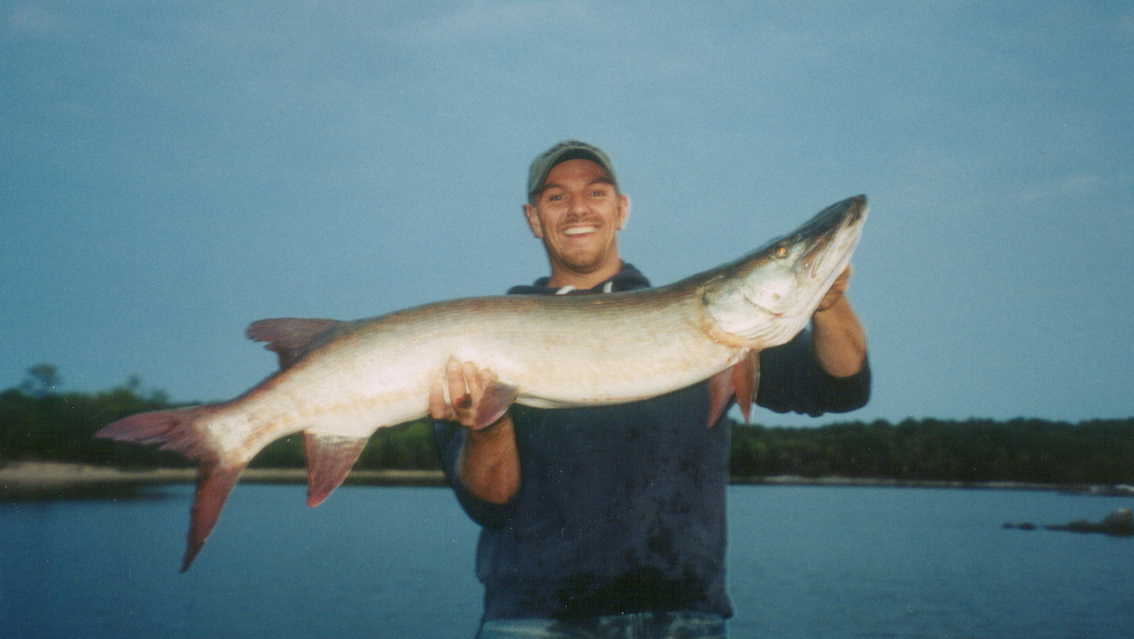
Posts: 427
Location: Roseau | Targo01 and I troll together. He said it right that you need a good partner while trolling. Try catching a fish in 40 mph on LOTW with a couple of lines out and the boat is rockin! Just make sure each person knows what to do, in calm conditions or windy conditions, because we all know, things are alot harder to do in the wind!!
Trolling rocks!! | |
| | |

Posts: 20266
Location: oswego, il | I would never gun it when a fish is on. I take the motor out of gear only when somebody has taken the rod out of the rod holder. What happends very often while trolling is that the momoentum of the boat brings the fish forward. Often times the fish will swim forard with the boat. If you put it in nuetral before the rod is picked up, the fish can gain several feet towards the boat. Slack is not good. Same thing happens with a planer board, I have seen a fish gain 10 feet taking a board off. I use a board now I do not have to take off the line which helps greatly. Anything you can do to control the slack is a huge plus. | |
| | |
Posts: 255
Location: MadCity Wisconsin | I agree with Todd, never gun the motor when a fish strikes the bait. I troll in a console model Lund. When a fish hits the first thing I do is mark the GPS at the location of the strike. I do this for two main reasons. I will go back to the exact spot minutes later and many times pick up another fish. The second reason is it gives the fish a few seconds to maintain a solid hook set without giving the fish slack line. I then cut my throttle speed 50% and grab the rod.
AFTER I have rod in hand, putting pressure on the fish, I cut the throttle to neutral and fight the fish. With 3 lines out,(Wisconsin allows 3 per angler) one being a planer board setup all I have to do is clear one other line by quickly reeling in with a free hand and I can fight the fish.
When I first started trolling I lost fish by getting too excited and immediately cutting the throttle to zero, thus giving the fish slack line. You will lose many trolled fish by doing this.
IMHO, I think you will rip a few muskie lips by increasing throttle speed after a strike. Take a few seconds, mark your GPS and then pick up the rod.
| |
| | |
| Tom we need to find you a hobby lol. Anyway it is possible to change the mass. However one small detail is that the boat would have to be moving at 299,792,458 meters per second. Special Relativity. | |
| | |
Location: Green Bay, WI | Shane Mason - 5/1/2009 10:24 AM
Tom we need to find you a hobby lol. Anyway it is possible to change the mass. However one small detail is that the boat would have to be moving at 299,792,458 meters per second. Special Relativity.
Thank you Dr. Einstein, but I don't think the Verado is quite that fast...
But I've got a hobby--two actually:
1) Math
2) Muskies
(Not necessarily in that order.)

TB | |
| | |
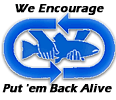
Posts: 267
Location: Lake City,Pa. | Seeing that we troll 50% of the time we have never lost a fish so far on a hook up trolling. The fish is already hooked! Before you take the boat out of gear take the rod out of the holder and give it a tug not a big tug mind you just enough to make sure the fish is still on. As for setting your drag, do not crank it up. Set the drag just so the reel will not click depending on you boat speed. Are rule of thumb is if you reel starts to click, 1/4 turn more on the drag. | |
| | |
Posts: 3518
Location: north central wisconsin | Never lost a fish on a hook up trolling?? That is fantastic man!!! We have had some great days, going 100%, but there are the occasionals where we end up 2 for 5 or 0 for 3 as well, just happens that way for us sometimes. Would like to think our hookup ratios are as good as anyones around here(GB), but I would love to get better, and 100% would really be sweet!
That said, I don't ever speed the boat up on a hit, as I typically have a better hookset % trolling than casting no matter our rate of speed. However, I could see where going a bit faster might lessen the time to 'straighten' things out when running inline planer boards, taking the direct fight to the fish quicker. Just something else to ponder...
Also, matt and judy bring up a good point. Seems if I speed up a tad, it is easier for my lures to 'click' out line. Could be making my lure run deeper, causing more drag I suppose. On that same note, when I water ski, if an innexperienced driver guns it while pulling me up or while already on plane, it can feel like my shoulders are being yanked out of position.....
Edited by Reef Hawg 5/1/2009 2:25 PM
| |
| | |
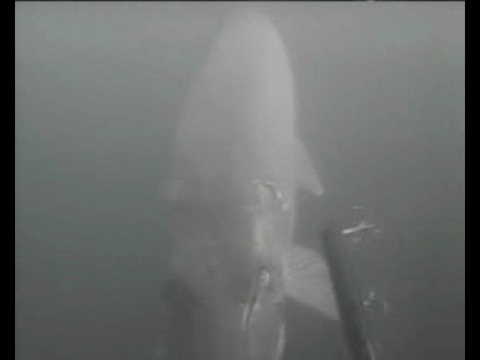
| Basically all my trolling is now done with the camera attached, so speeding up may occur only to entice a strike of a following fish. I let the loaded rod set the hook after they pop the release. | |
| | |
Location: WI | Sorry Man, couldnt resist poking the bear on that one  I felt bad too, because I know how much other stuff you have going on. I felt bad too, because I know how much other stuff you have going on. But I really got a cool visual of "Stewey" (thats "his" nickname now) getting some seat time in a particle accelerator. I would pay to see that show. Does anyone ever REALLY win in a "geek off" ???? Hopefully we will have another hobby here for you soon 
| |
| | |
Location: Green Bay, WI | Well, I might have neglected to mention some of my *other* hobbies..
TB | |
| | |
| One thing that I will add to Trolling and when to take the trolling motor out of gear.I always leave the motor in gear until someone has cotrol of the rod to keep tension on the fish.On water with no current I simply take the boat out of gear when someone has control of the rod and tension.But in river current and wind the situation will be much different.When fishing in a river or into the wind I will turn out to the side so that you are even with the fish as you drift down stream or with the wind then I will netraul the kicker motor.If you go out of gear and your going up stream or into the wind you will drift to the fish causing slack or be on top of a green fish instantly.Try neting a fish with your boat being pushed toward the net,sometimes the net will turn inside out showing the fish the bottom of the bag! | |
| | |
Location: WI | Sadly enough, Quantum Mechanics is one of my "hobbies". Trolling however is not my favorite past time, when forced to troll you can usually find my laying down in the bottom of Reef Hawgs boat keeping an eye out making sure the blimp doesnt land on us. (I keep an eye on the important stuff ;)) Although it shouldnt be a problem with the stereo system Reef Hawg put in even the blimp should hear us coming.  Little known secret is that the GB muskies love "Me First and the Gimmee Gimmees" Little known secret is that the GB muskies love "Me First and the Gimmee Gimmees" | |
| | |

Posts: 906
Location: Warroad, Mn | Tom:
You're worrying about the wrong thing. Much more important to locate the fish. A boat trolling will take care of hooking the fish. I've caught lots of fish trolling and we don't do much but stop the boat and reel in the fish.
I also like math, but I don't think it applies here!
Doug Johnson | |
| | |
Location: Green Bay, WI | Well Doug, I learned long ago that when math doesn't seem to apply, a person needs to learn more math...
But you're right about concentrating on finding fish--but remember, this is Green Bay. It's EASY to catch 50" muskies on Green Bay when trolling. You really don't even have to try, hardly. Just ask anybody who voted against the 54" size limit--these things lay on the surface and wave down boats with their pectoral fins. You hardly even have to use a lure...just go over and net them. (Personally, I think those people should spend some more time studying math, but that's just my opinion.)
As to the question at hand, I shift it into neutral pretty quickly and reel in the fish as well. But you should see some of the things I've seen out there. I guess I just thought this thread would be a good safety reminder for those guys trolling out there come opening day.
TB
| |
| | |
Posts: 3518
Location: north central wisconsin | I don't think the muskies like the metal much at all. The other boats just hate it enough that we end up with several quality acres to ourselves most days... I didn't even think Mason heard Me First and Gimmie Gimmies that day, judging by the puddle drool on the floor near his melon. It is impressive, the quickness he exhibits in jumping for the net when a clicker goes off. Just wish he wouldn't be sleep walking when my wife brings a musky to the side of the boat...... Gotta hand it to the dude though. I don't know too many people who keep a near full time guide client list very satisfied throughout the fall in Forest county, and still somehow show up and spend 6-10 hours a day on the bay with us 2 counties to the south east... I do know that stock in Monster energy drinks, Morning Glory choco milk, and Jack Links Terryaki sticks all take a mysterious hike come mid October.... | |
| | |
Location: Green Bay, WI | Ah...I knew that caffeine somehow played a HUGE role in that endeavor. But there are medications a person can take to help with all that uncontrollable drooling!
Maybe it's time for an intervention? I think we need to talk.
TB
| |
| | |
| Here's my feeble math:
Hooked fish + tight lines = more fish landed
| |
| | |
Location: Green Bay, WI | That'll work...
TB | |
| | |

Posts: 267
Location: Lake City,Pa. | Just one note seems to be not talked about is what rods, line, leaders, rod holders and reels should be used when trolling. Our boat has a planer board mast to downriggers ,witch all can be installed in no amount of time, thanks to Bert's Custom tackle. Now you have to realize that we own a 2003 Crestliner SuperHawk walk thru windshield 16' model and room is very limited. We can switch from casting to trolling in no amount of time as long as Judy steers the boat straight, lol. Rod Holders: Downeasters (The best period) Outrods: 10' Erie Series glass dipsey diver (H) spooled with 45# lead core and seagar 4 1/2 ' leaders. Stern Rods or down riggers rods: 8' Okuma glass (MH) spooled with 80# whiplash and seagar 2 1/2' leaders. Downriggers. Cannon sport troll (2) Planer board mast : Cannon (custom made attachment so it will lock into front seat base) Thanks Bob. Reels: All Okuma line counters This all plays an major role in trolling period.
Edited by PunchandJudy 5/4/2009 3:58 PM
| |
| | |

Posts: 16632
Location: The desert | I'm a high tech troller......Hold rod in hands, no sonar, no GPS, no planer boards, using braid line, no line counter. Got a 31 incher yesterday, must be doing something right. | |
| | |
Location: Green Bay, WI | Yes, but were you singing a Peter Gabriel tune?
If not, then I'd say it was just plain luck...
TB | |
| | |

Posts: 16632
Location: The desert | To be honest I don't really remember what was playing on the Ipod. Surprisingly not rap, I know that much. | |
| |
|
 Calling all trollers...
Calling all trollers... Calling all trollers...
Calling all trollers...